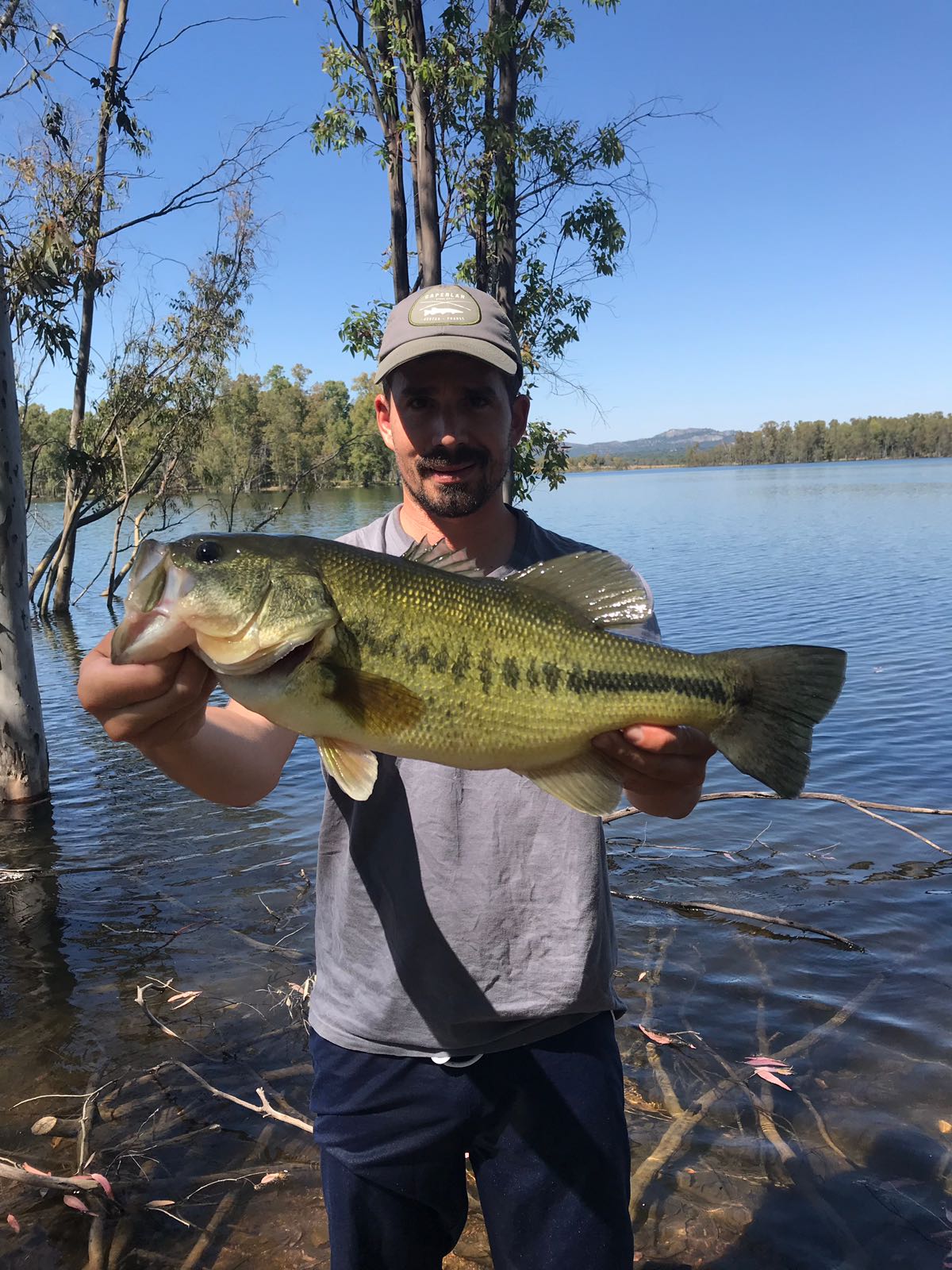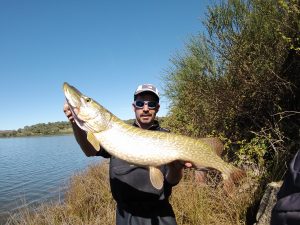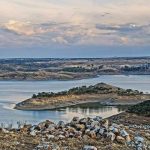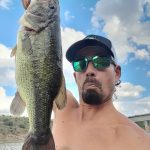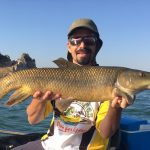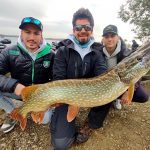Characteristics of Horno Tejero and Boquerón lakes
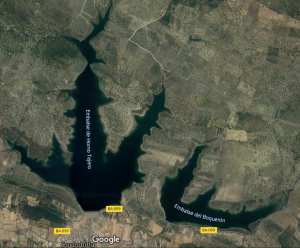
The Horno Tejero reservoir has a capacity of 24 hm3 and a flooded area of 283 hectares. Boquerón is smaller, with a capacity of 6 hm3 and 124 hectares. Despite being small, Horno Tejero and Boquerón lakes are famous for the size of their catches. They are reservoirs for the supply of the population, so they do not usually have sudden changes of level. Generally we will find them near their maximum capacity, between 20 and 22 hm3 Horno Tejero and between 4 and 5 Boquerón. Its waters are very clear except for occasional moments of heavy rain and large floods in the streams. Do you want to know the level in real time? Click here and here.
Currently both are fishing preserves, managed by a local society of fishermen, but we can get permits in Budiex store in the municipality of Cordobilla de Lácara itself.
Bottom composition and structures
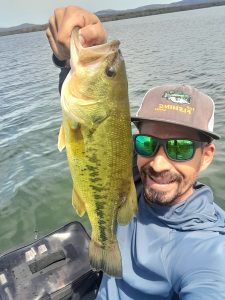
They are characterized by very gentle slopes and hardly any rocky structures. Except for a couple of areas where there is a little more unevenness, it is very difficult to access great depths fishing from the shore, an important factor to take into account when we face our fishing days.
The structures are practically reduced to the walls and their surroundings. In Horno Tejero there is also an old road, its slope and some very long points, but hardly steep, with a rocky bottom formed by schists and quartzite.
Vegetation and cover
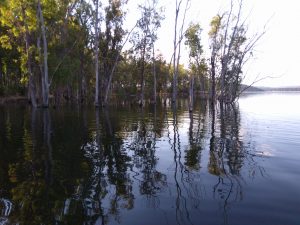
In Horno Tejero we have large areas of dry eucalyptus trees surrounding some banks of the reservoir, most of them remain standing although there are some lying down. These areas are only interesting when the reservoir is practically at 100% of its capacity, since as soon as the level drops to 21 or 22 hm3, most of them stay out of the water or in very shallow areas.
There are also remains of bush, mainly rockrose, which in rainy years can provide some cover for fish, although there are fewer and fewer of them and they deteriorate over the years.
The Boquerón reservoir, on the other hand, is almost entirely surrounded by reeds and cattails. This vegetation offers a very interesting cover, especially in years when it is at a high level. There are also some submerged holm oaks.
In the mouths of the creeks we have presence of underwater vegetation and some weeds, although they are not very significant.
Main fishing species
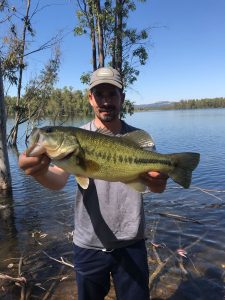
In spite of being two rather small reservoirs, both are famous for the enormous sizes that their black bass and carp reach. Their crystalline waters and low slopes make it a real challenge, however.
- Black Bass. The population of Horno Tejero is very interesting, although it is a very complicated reservoir to fish due to the scarce cover near the banks and the shallow depth. In Boquerón the depth that we can reach by fishing from the shore is also scarce, although when it is high there is indeed plant cover. There is a good population of medium sized fish and some specimens even reach 3 kg in weight.

Pike Horno Tejero - Pike. It is also an abundant predator in both reservoirs, although it does not stand out for reaching large sizes. We can spend entertaining days with multiple captures of small and medium size.
- Carp. Probably if this reservoir is famous for something it is for its big and elusive carps. Several specimens have been caught weighing more than 30 kilos and there is a good density of quality fish, with frequent catches above 15 kg.
Baitfish in Horno Tejero and Boquerón
They are one of the few reservoirs in which the bleak has not yet made an appearance. This does not prevent the predators from having a practically “unlimited” source of food with the crawfish, whose densities are very high.
The sunfish is also abundant in both reservoirs and we can find some tench.
Access and navigation
Nowadays, navigation is allowed in both, so float tubes, pontoons and small boats can be used. A good part of the banks are easily accessible, due to the “flatness” of the banks. However, in order to access certain areas we will have to walk several kilometres as there are not many roads leading to the water.
Since May 2024 it is not navigable by any flotation device as a measure to avoid the propagation of Ludwigia sp and also one of its tails is a breeding area of Bonellí’s eagle.

